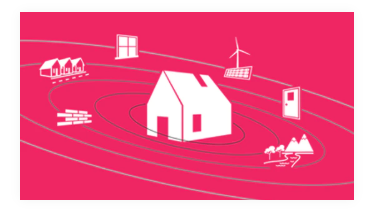Circular Economy for a Sustainable Built Environment free videos and free material uploaded by Delft University of Technology Staff .
The course is divided into six modules:
1 Introduction:
Motivation for the Circular Built Environment and basic terms The massive existing building stock and constantly increasing housing demand requires new building technologies and design strategies. Is circularity the answer? We will discuss the principles of the Circular Economy and how the Circular Built Environment can apply to a number of systemic levels.
2 Building products:
Materials and components This week focuses on the products and materials, the base ingredient of buildings. What their life-cycle is and how they determine the overall life-cycle performance of buildings. We will explore design for disassembly and how this process can extend the useful life of the built product or bring them back to the circle.
3 Architecture and building:
Sustainable construction and operation This week we will discuss the buildings’ layers and their life-cycle and explore how the principles of Circular Economy influenced the design of the featured case study buildings. We discuss the role of business models within the design and development process.
4 Cities and neighborhoods:
Buildings, infrastructure and resource flows Buildings cannot be seen as isolated entities. During this week we will explore how circularity is connected to the neighborhood and city level. We will discuss the three most important flows that enter, circulate and leave the urban environment every day: water, energy and waste. We acknowledge that potential circular solutions depend on scale (building block, neighborhood, city) and on the various ways in which solutions can be organized (individually, collectively or centrally).
5 Regions:
From supply chains to value webs The week centers around one comprehensive assignment which aims to explore the different impacts of thinking through scales. Furthermore, the assignment focuses on the geographical value chains of building products and reflects on possible environmental impacts of the different life-cycle stages and activities along the value web.
6 Conclusion:
Addressing the transition to a Circular Built Environment, a practical approach We will discuss how the various aspects learned are impacting the implementation of circular building principles. Finally, we will sum up and come to an integrated view on a future circular built environment.
Building construction is one of the most waste producing sectors. In the European Union, construction alone accounts for approximately 30% of the raw material input. In addition, the different life-cycle stages of buildings, from construction to end-of-life, cause a significant environmental impact related to energy consumption, waste generation and direct and indirect greenhouse gas emissions.
The Circular Economy model offers guidelines and principles for promoting more sustainable building construction and reducing the impact on our environment. If you are interested in taking your first steps in transitioning to a more sustainable manner of construction, then this course is for you!
In this course you will become familiar with circularity as a systemic, multi-disciplinary approach, concerned with the different scale, from material to product, building, city, and region.
Some aspects of circularity that will be included in this course are maximizing reuse and recycle levels by closing the material loops. You will also learn how the Circular Economy can help to realign business incentives in supply chains, and how consumers can be engaged and contribute to the transition through new business models enabling circular design, reuse, repair, remanufacturing and recycling of building components.
In addition, you will learn how architecture and urban design can be adapted according to the principles of the Circular Economy and ensure that construction is more sustainable. You will also learn from case studies how companies already profitably incorporate this new theory into the design, construction and operation of the built environment.

- 0 Reviews
- 1 Students
- 101 Courses

Write a public review